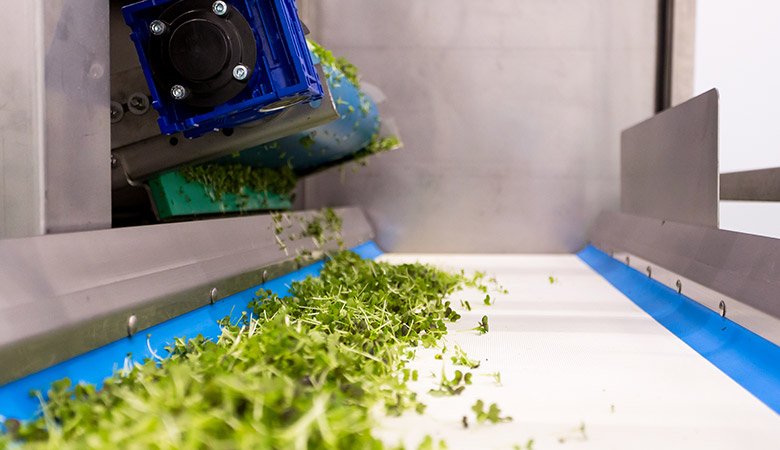Gestão / Artigos
SIPOC: What it is and how to use it
To improve a process, you first need to understand it. And one of the best ways to do so is with SIPOC. Find out how to use it.

 11 minutos de leitura
11 minutos de leitura
2023-04-10 11:45:08
It was meant to be the largest and most advanced commercial aircraft in the world. The Airbus A380 was designed with a capacity of 500 passengers and was meant to eclipse its biggest competitor, Boeing’s 747. Passengers and pilots alike loved it for its comfort. At the time, it seemed posed to become a leading light in European aviation – instead, the A380 ended up as one of its most spectacular failures.
In hindsight, however, it seems easy to predict A380’s fate. For years, the main trend had shifted away from larger planes and instead leaned towards lightweight composites that save fuel, something that the A380 did not posses. Development budget ballooned to an excess of $30+ billion – often over something as simple as different versions of CAD programs employed by different teams. After just over 10 years of being commercialized and just over 200 planes sold, the last of these giants was eventually delivered in 2021.
When processes become so painfully complex, the impact of poor internal communication and an incomplete process end-to-end vision can be catastrophic. In these situations, the SIPOC diagram helps teams – from an emerging start-up to a leading aviation company – gain new insights into how each part of the process fits together, ensuring that the entire team agrees. Find out what SIPOC is and how to apply it.
What is SIPOC?
SIPOC stands for Suppliers, Inputs, Process, Outputs, and Customers. It is a visual tool that helps to represent one or several processes in which a team is involved. For each process, SIPOC shows what it delivers and to whom, how it starts and finishes, the sequence of actions required for its execution, and its suppliers.
A SIPOC diagram typically includes the following elements:
Suppliers: Entities that provide materials, information, or services for the process. They can be internal or external.
Inputs: Resources, materials, equipment, or data provided by suppliers, necessary for the process and for the production of the expected outputs.
Process: The steps and actions necessary to produce the desired output, i.e., those that link inputs to outputs.
Outputs: products, services, or information resulting from the process.
Clients: entities that use or receive the products, services, or information resulting from the process.

Source: EdrawSoft
Any of these is critical to the understanding – and results – of the process. Take the A380: Rolls-Royce and GE Aviation, two of its largest suppliers, surprised Airbus by announcing that their latest generation of engines would include innovations that would save up to 15% on fuel, when the A380 was already in production. This left Airbus at an embarrassing commercial disadvantage. But problems also arose on the other side of SIPOC, from the customer side.
As the president of Emirates noted at the time, Airbus did not equate the impact of the large lump payments that would be required to compensate passengers if A380 flights were cancelled or delayed. In fact, customers and pilots loved the experience, but they were not the main customers: it was the airlines, concerned with cost and revenue per passenger, that determined the success of the project.
For these reasons, SIPOC is often used in the “Define” phase of the DMAIC method, the base method of the Six Sigma methodology.
What is SIPOC used for?
SIPOC is useful to map out a process or group of processes a team is involved in, helping team members communicate in a common language and understand their scope.
SIPOC helps you understand a team’s processes
This visual tool provides a comprehensive overview of one or multiple process, helping to understand and communicate the key steps that have a real, direct, and significant impact on results.
SIPOC helps keep teams aligned
Creating a SIPOC is simple, and it can be used as a starting point for improvement brainstorming and problem-solving. It ensures that everyone has access to the information needed to make decisions about processes’ outcomes.
SIPOC clarifies the steps in a process
The simple act of creating a SIPOC helps to clarify the most crucial steps in a project, leaving aside secondary elements that have little or no bearing on the outcome. This analysis can help eliminate unnecessary or low-value-added steps.
How to use SIPOC?
After defining an area to analyze, the SIPOC should be filled out from right to left, i.e., from customers to suppliers. This will help to keep the team focused on the deliverables, that is, on what each process delivers. SIPOC can be used to analyze the processes of a team, a department, or even an entire organization. It can be used on a new process or to improve an existing process.
1. List your customers and outputs
To start using the SIPOC, identify the people or teams served by the process under analysis. Then, identify the outputs or deliverables of the process for each of them. This way, you will understand what you can expect from the resources invested and what the customers (internal or external) are getting. For example, for a “validate customer order” process, example outputs will have the “purchase approved” and the “customer data updated”. The customer will be the logistics team that can then prepare the delivery. Each of these processes will have several steps, to be detailed in the next step.
2. Define the most important process steps
Next, identify the key steps required to execute the process, i.e., to get to the outputs you identified in the previous step. The goal is not to go into detail, but to list the key steps necessary to help to clarify what happens within the process. Following the same example, to get the output “database updated” you may need to contact the customer, access a platform, update the data, and generate a report.
3. Identify suppliers and inputs
It is time to identify the suppliers of the process and the inputs required. You may, for example, need the customer’s credit history – provided by the sales team – before starting the process of “validating the customer order”.
After gathering all the information, draw the SIPOC and share it with everyone involved. The resulting diagram should be validated by the internal teams before it is implemented to ensure that all the information is correct and that the SIPOC meets the needs of the process.
When to do a SIPOC?
SIPOC can be used whenever there is a need to improve or optimize the performance of a specific process. Some signs that indicate it is time to create a SIPOC are:
- Process changes: when there are significant changes in processes, creating a SIPOC can help to identify the issues and necessary improvements.
- Changes in regulatory requirements: when new regulatory requirements are introduced or existing ones are changed, it is important to create a SIPOC to ensure that the process meets the new requirements.
- Performance issues: when a process is not meeting the expected goals, it can be useful to create a SIPOC to identify the bottlenecks and opportunities to improve performance.
- Incomplete or failed products or services: when products or services are not being delivered according to customer expectations, creating a SIPOC can help identify where to improve the process.
What are the limitations of SIPOC?
SIPOC is not intended to provide very detailed information about the processes under analysis, but rather to help those involved to get an overview, or to facilitate brainstorming. Therefore, SIPOC alone may not be sufficient to identify and correct problems. Rather, it is only one of several process management tools, and should be used as a complement to other continuous improvement methods.
In conclusion, SIPOC is a useful tool to help you think and suggest new ways to bring better results. By putting down on paper the main points of a process, everyone involved understands what is working and what needs to be improved.
MultiWasher, continuous improvement in industrial washing
Somengil developed the MultiWasher to help companies improve their processes. This leading industrial washing machine sanitizes any type of utensil. More than ever, washing quality and saving resources are essential, and the MultiWasher achieves unprecedented levels.
The MultiWasher saves 2/3 water of compared to other solutions on the market, plus energy, detergent (up to 70%), and labor. It sanitizes any type of utensil while protecting the environment. It does not require pre-washing, reduces washing time, and the utensils come out of the machine fully dry and ready to use. You can see it in action and check for yourself the impact this technology will have on your business. The MultiWasher elevates your industrial washing processes to perfection.
Também pode gostar

Gestão / ArtigosArtigos
What is industrial hygiene?
Industrial hygiene is an essential part of a happy, safe and productive workspace. But what exactly is this broad concept.
Postado em 2021-11-25

Gestão / ArtigosArtigos
Lean Manufacturing in the food industry: more than a buzzword
Lean Manufacturing helps companies in the food industry be more competitive and innovative. But why do so many companies struggle and what is the...
Postado em 2021-12-23

Gestão / ArtigosArtigos
DMAIC: what it is, what it is for, and how to use it
Reduce waste, solve problems, and improve processes. Learn about the DMAIC method and find out how to implement it in practice.
Postado em 2023-03-30






















 Português
Português English (UK)
English (UK) English (USA)
English (USA) Français
Français Español
Español Deutsch
Deutsch